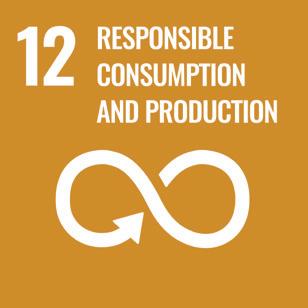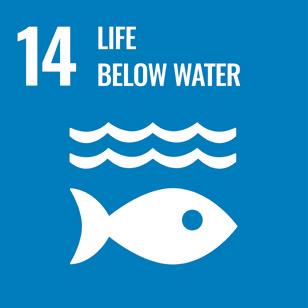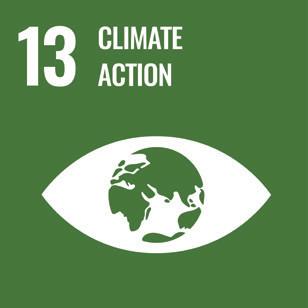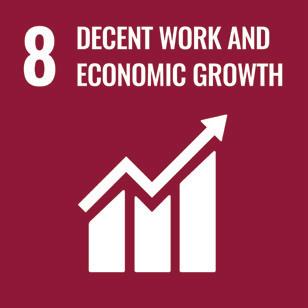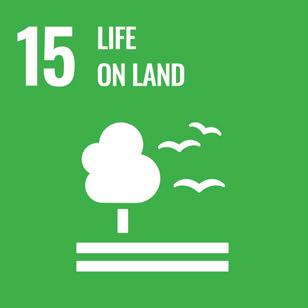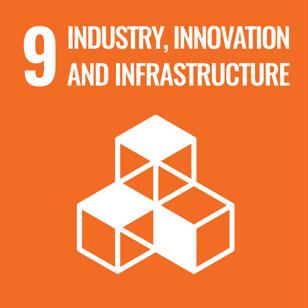

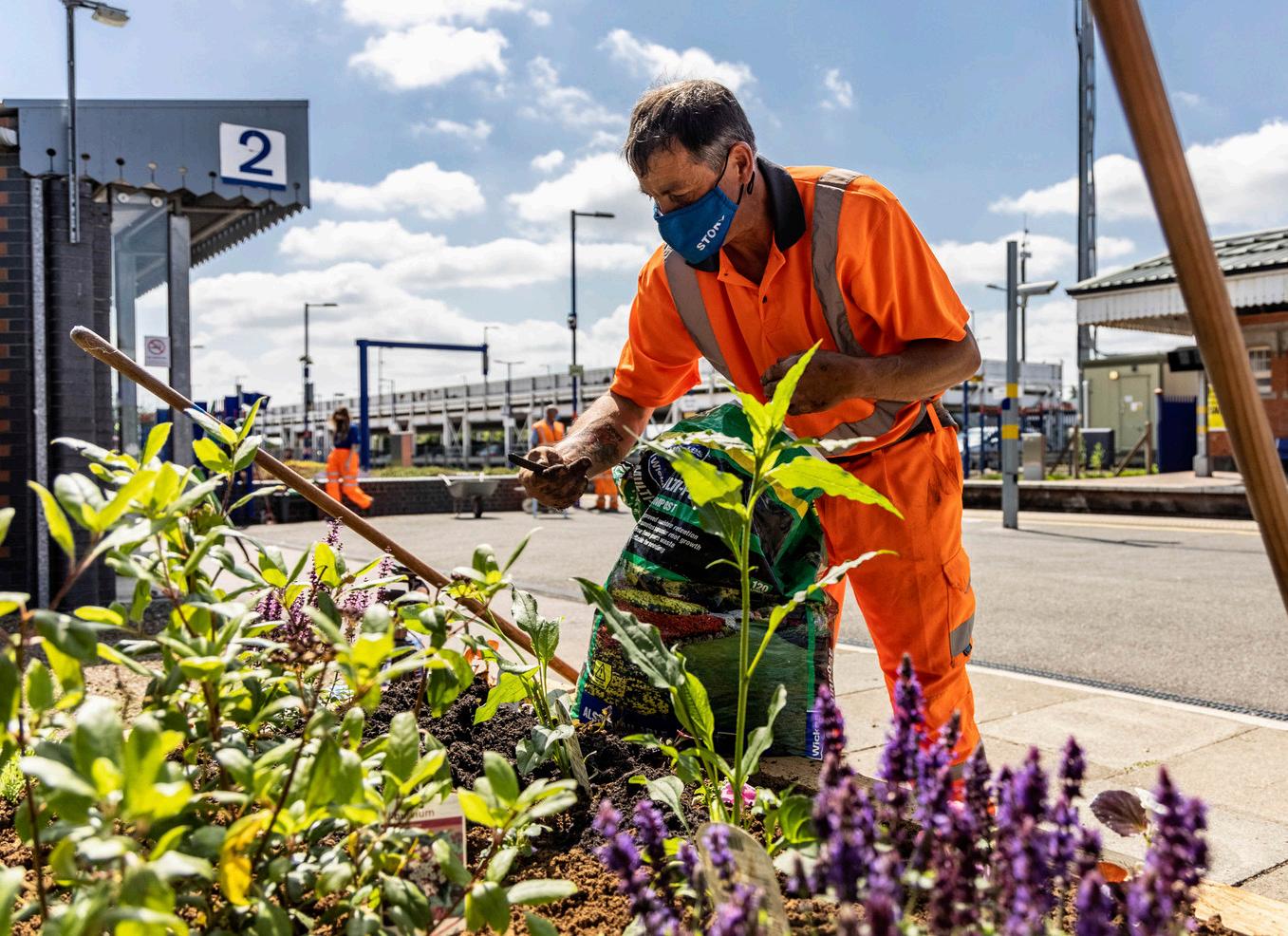
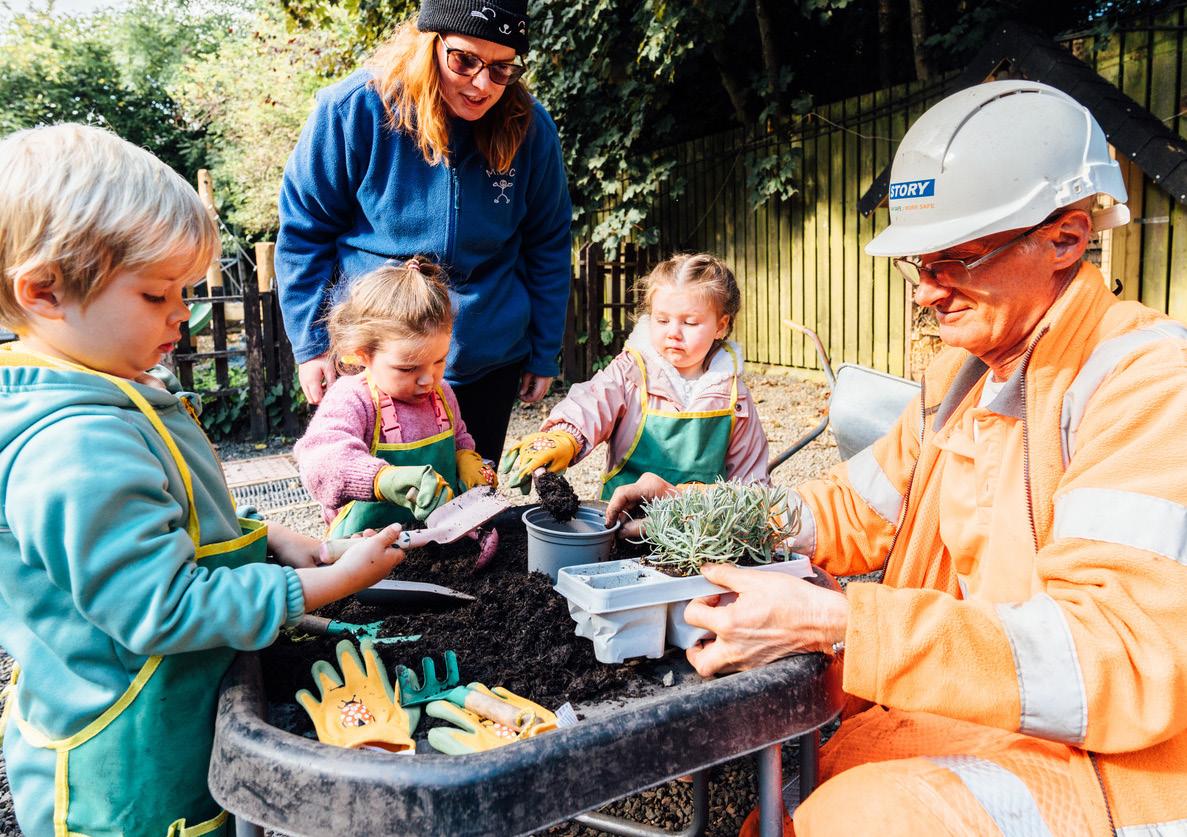































In the development of our Story Contacting Ltd Environmental Sustainability Strategy, we have acknowledged and aligned our approach with the following:
• Our Environmental Sustainability Policy
• Legislative compliance
• Business ethos and objectives
• Integrated Management System (IMS)
• Client commitments and requirements
• United Nations Sustainable Development Goals (UN SDGs)
This strategy is reviewed every five years, with targets set and monitored on an annual basis, aligned with the objectives under each value stream and associated enablers, allowing for year-on-year performance improvement as part of the Annual Review and Report undertaken at the financial year end.
As we implement this strategy, we will report on progress in order to maintain transparency and accountability. The Global Reporting Initiative (GRI) encourage organisations to align their sustainability reporting with UN SDGs’ core metrics and outcomes.
The Environmental Sustainability Strategy is fully endorsed by our Executive Leadership Team.
Our commitments reflect our definition of sustainability. Sustainability is about protecting what is most important to us, our people, our communities, and our environment.
The scope of this strategy omits Social Value which is addressed through a standalone Social Value strategy. Corporate Sustainability is covered through a series of policies and is predominantly managed by the Story People Team.
To fulfil our motto of ‘Do it Sustainably’ means more than the creation of this Strategy. We acknowledge that there are key enablers to fully deliver sustainable solutions. This strategy recognises the ‘what, how and who’ but most importantly, we appreciate the ‘why’, which reflects our strong sustainability culture.
‘Do it Right’ means ‘Do it Sustainably’
Sustainability is about protecting what is most important to us, our people, our communities and our environment.
Value Strategy Environmental Sustainability Strategy Corporate Sustainability
Sustainability touches every part of our business therefore we set ourselves up for success through integration and collaboration. We maintain organisational structures, an Integrated Management System (IMS), standard operating procedures, and competency to ensure, as a minimum, legal compliance. We consider the following to be key business as usual enablers towards achieving this Strategy:






• POL/01/01 Integrated Business Systems Manual
• PI/13/06 Continuous Improvement Strategy
Sustainability has numerous interdependencies, and we adopt a holistic approach to ensure our decision making is robust and justified. Our Environmental Management System (EMS) supports our mission through adopting an integrated and structured approach certified to ISO 14001:2015 Environmental Management System.

Through having a Management System certified to ISO 14001 means we are taking proactive measures to minimise our environmental impact, comply with relevant legal requirements, and achieve our own environmental objectives. By adopting this standard, we demonstrate our commitment not only to regulatory compliance, but to ongoing environmental improvement with tangible environmental benefits and enhanced environmental performance.
Achieving our objectives is underpinned by the standard operating procedures within our IMS. These are identified as tactics within this strategy.
We share best practice and lessons learnt. We share awareness briefs such as Toolbox Talks and hold Lunch and Learns with subject matter experts. We actively seek feedback from our clients and encourage improvement spotters on our projects to raise opportunities for improvement. We have Champions in place to manage the Continuous Improvement Plan liaising with the Improvement Sponsors and Working Groups to deliver the desired outcome in a controlled manner.
Maintain certification to ISO 14001 Environmental Management System
• POL/01/02 Roles and Responsibilities
• STY/HSQ/PRO18 Competence Training and Awareness
Story appreciates that a key enabler is in having clear and defined roles and responsibilities; these are identified within our Roles and Responsibilities Policy.
Chief Executive Officer
• Approves and champions the Environmental Sustainability Policy and Strategy development.
• Ensure that the organisation is appropriately resourced to deliver its objectives.
• Support the Environmental Sustainability Strategy by communicating and leading implementation in their regions. aligning operations with goals and driving accountability for environmental sustainability performance and continuous improvement.
HSQE Director
• Providing strategic direction leading on the development of the Environmental Sustainability Policy, ensuring compliance as a minimum, driving performance improvements, and integrating environmental sustainability into management systems across the organisation
• Representing the organisation, driving consultation and participation across the organisation in HSQE matters.
• Ensure resources at the right capability and capacity to deliver and meet sustainability goals and client expectations.
• Maintain and promote understanding of the company Environmental Sustainability Policy and Strategy.
• Providing subject matter expertise, advice and support to all levels of the organisation as required. This includes the provision of support at project levels, for example, to align with our PAS2080 commitment.
• Establishing, co-ordinating and maintaining environmental systems.
• The development of, monitoring and reviewing company strategic direction.
• Ensure that environmental sustainability responsibilities are understood and carried out by others.
• Ensure that effective means of communication are available so concerns and suggestions can be raised (see governance structure).
• Attend formal meetings, assisting in the formulation of agendas, monitoring the performance of departments and the organisation
Head of Operations
HSQE Team
• Promote and support the Environmental Sustainability Strategy by integrating sustainability into daily operations, ensuring that all practices and regulatory standards are achieved thus ensuring compliance, and driving performance improvements across their teams and projects including participating in audits/inspections.
• Plan and deliver projects that align with sustainability objectives following environmental procedures, manage risks, ensure compliance, and embed environmental considerations into project delivery, and work with those responsible for site on a day-to-day basis to ensure complete awareness of environmental requirements.
• Collect, and/or facilitate the collection of, data onsite to support our PAS2080 compliance.
• Support the Environmental, Sustainability and Carbon Lead in achieving their responsibilities as per their direction.
• Provide day-to-day support to projects.
Within the IMS, roles and responsibilities are outlined which are specific to each procedure, task or activity being undertaken. Roles and responsibilities have been assessed using a RACI matrix. Primary responsibility sits with the Environmental, Sustainability and Carbon Lead.






The Training Manager is responsible for the provision of training or awareness to achieve the necessary competence requirements. We have a Learning Management System in place with access to a suite of training in various sustainability topics. As members of the Supply Chain Sustainability School and several professional institutions, we encourage continual professional development.
We ensure that our people are aware of the relevance and importance of their activities and have the competency to contribute to the environmental sustainability objectives through setting and monitoring against three targets.
Environmental, Sustainability and Carbon Lead to be Certified Carbon Literate
General environmental awareness training 100% completion
• STY/HSQ/PRO35 Governance Procedure
• STY/HSQ/PRO34 Assurance Procedure
All environmental professionals are members of a professional institution
• Aligned with our Roles and Responsibilities above, we have a rigorous governance structure and assurance programme in place to ensure that we are efficiently and effectively delivering against our motto of ‘Do it Right’.
The purpose of the governance procedure is to evaluate the performance and effectiveness of the Story IMS and to support the business in meeting its strategic objectives.
The governance structure ensures effective decision-making and accountability on environmental sustainability matters as well as providing ownership and contributing to realising opportunities for improvement. The Safety and Sustainability Leadership Board (SSLB) is the crucial platform with quorate membership and defined inputs/outputs.
Each meeting has the ability to escalate any identified issues up the governance hierarchy until a resolution is agreed. Each meeting within the hierarchy has a pathway back to the IMS and to implement any required changes.
We have a risk-based audit schedule of IMS procedures to systematically evaluate and ensure compliance with established procedures, regulations, and legislative requirements. A Management Reporting Dashboard is reviewed on a monthly basis to highlight potential areas of risk or opportunities for improvement; this is subsequently shared with the Executive Leadership Team (ELT).
Assurance completed (as per assurance schedule) with SSLB involvement
Evidence of governance taken at ELT level
• POL/015/01 Corporate Relationship Management Plan POL/015 Collaborative Working Policy
• The impact of our vision and mission is in part owed to our collaboration with others, both internal and external stakeholders and the communities in which we work. Through consistent engagement and clear communication, we strive for collaboration and in building a strong sustainability culture.
We believe by working together we can achieve more, and this is reflected through our certification to ISO 44001: Collaborative Business Relationships Management. This strongly aligns with the UN SDG 17 which refers to working in partnership to achieve the common goals.

We proactively engage with our supply chain, covered under our Sustainable Procurement Value Stream, aligning our approaches in order to maximise opportunities and realise benefits. For example, this is demonstrated by implementing and maintaining our sustainable procurement strategy to ISO20400. We have a target to embed the principles of ISO 20400 Sustainable Procurement within ISO 44001.
We measure and publicly report under the Energy Savings Opportunities Scheme (ESOS) and Streamlined Energy and Carbon Reporting (SECR) , which falls under our commitment to our Carbon Management Value Stream.
Maintain certification to ISO 44001
Collaborative Business Relationships Management
Embed the principles of ISO 20400 within ISO 44001






• PRO/007 - Appendix B Environmental Legislation Compliance Matrix
Our Environmental Legislation Compliance Matrix is updated bi-annually (as a minimum or as required) to ensure that we maintain legal compliance. Relevant legislation is recorded against environmental aspects detailing the key requirements and compliance controls to be in place.
Maintain an up-to-date Environmental Legislation Compliance Matrix
• POL 002 Environmental and Sustainability Policy
Our Story Environmental Sustainability Policy reflects what is most important to us, that is protecting our people, our communities, and our environment.
We strive beyond compliance towards best practice through setting, monitoring, and reporting on our objectives and targets. Alongside this, we continue to improve our tactics to ensure the best outcomes. This is underpinned by our principles outlined within the Policy:
• Leadership commitment
• Identify risks and opportunities that may affect our environmental impact.
• Maintain effective communication, consultation and engagement with stakeholders.
• Developing and monitoring performance against defined environment and sustainability objectives.
• Deliver on our Social Value Strategy.
• Compliance and standards.
• Plan for the future.
Story Contracting are incredibly proud of our motto of ‘Do it Right’ and to us this means ‘Do it Sustainably’.
Our commitment to ‘Do it Right’ means we take our environmental responsibilities seriously and see them as integral to the success of our business.
Sustainability has numerous interdependencies, and we adopt a holistic approach to ensure our decision making is robust and justified. We believe the best way to achieve this is to educate and embed environmental decision making in everything we do.
Aligned with our vision and mission, our Environmental Sustainability Strategy focusses on five Value Streams which are important to us and support our business delivery.
Carbon Management Management of Biodiversity
Targets are set and monitored on an annual basis. These targets are aligned with the objectives under each value stream, and associated enablers, which are linked to associated outcomes. This enables Story Contracting Ltd to measure our performance allowing for yearon-year performance improvement.
Within each Value Stream are key Delivery Tools which outline the methodologies/guidance/ standards in which to achieve the objectives. The tactics highlight the procedures within our IMS by which to adhere to under each Value Stream. Our standard operating procedures help to ensure that our IMS is set up for successful implementation and continually improve delivery.
The outcomes prove how we are not only meeting business objectives but achieving legislative compliance (as demonstrated though the Environmental Legislation Compliance Matrix), satisfying client requirements, and linked to the relevant UN SDGs.






In 2019, the UK Government amended the Climate Change Act 2008 to adopt a legal commitment to achieve ‘Net Zero’ carbon emissions by 2050 (2045 in Scotland). To drive towards this, Story Contracting have set a Value Stream for Carbon Management.
Our commitment to Net Zero Carbon is demonstrated within our Carbon Reduction Plan as per Procurement Policy Note (referred to as PPN 06): Taking account of Carbon Reduction Plans in the procurement of major government contracts. Emissions are reported in accordance with the Greenhouse Gas (GHG) Protocol’s Corporate Accounting and Reporting Standard. Our emission reduction targets are verified by the Science Based Targets Initiative (SBTi).
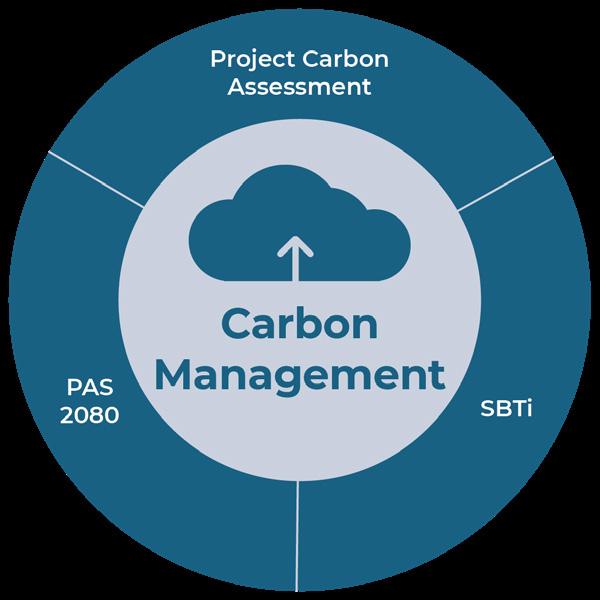
We publicly report via the Streamlined Energy and Carbon Reporting (SECR) and Energy Saving Opportunities Scheme (ESOS).
Story Contracting recognises not only the need to reduce our contribution to climate change through reducing emissions, but to also adapt to a changing climate through strengthening resilience and adaptive capacity to climate-related hazards.
The carbon management procedures within our IMS supports the implementation of our target to have a Carbon Assessment in place for each project. A key target is certification to PAS 2080 Carbon Management in Infrastructure and Built Environment.
Objective: Project Carbon Assessment
Target: In place on each project >£1m
• PPN 06
Objective: SBTi
Target: Verified SBTi targets in place
• Greenhouse Gas Reporting Protocol
• PAS 2080
• SBTi
• SECR
• ESOS
• ISO 14001
Objective: PAS 2080
Target: PAS 2080 certification in place by Q4 2025
• POL 05/02 Environmental Aspects and Impacts Register
• STY/PRO/09 Procedure for Environmental Aspects and Impacts
• STY/ENV/PRO/02 Environment and Social Management Plan Completion
• STY/ENV/PRO/02/F01 Environment and Social Management Plan
• STY/ENV/PRO/02/GN01 Environment and Social Management Plan Completion
• STY/ENV/PRO05/GN02 Sustainable Construction Review
• STY/ENV/PRO/05/F02 Sustainable Construction Review
• STY/ENV/PRO/06 Carbon Management

Story Contracting sought to identify a more sustainable solution to providing energy to site. We worked with our supply chain and requested a proposal from Think Hire to supply a ‘Solartainer’ with the primary objective to reduce environmental impact.
Operational performance data had been collected since installation in April 2023 to August 2025 with the following positive environmental results:
• 359 tonnes CO₂e reduction. Total emissions reported as 76,009 kg CO₂e.
• 51% reduction in noise pollution.
• 52% saving in cost; compared to the total cost of running a standard generator being £253,509.
• 80% reduction in fuel consumption. Based on standard 160,618 litres fuel use costing £230,833.
These findings are compared with a traditional diesel generator set-up, with an overall cost saving of £132,387 in the operating period.

Developing and monitoring performance against defined environmental and sustainability objectives.
Identify risks and opportunities that may affect our environmental impact.
Carbon Management
Pollution Prevention
Sustainable Procurement






There is a legislative duty to protect biodiversity. To be complaint and support clients in fulfilling of legal requirements, we have a Value Stream for the Management of Biodiversity.
Biodiversity Net Gain (BNG) is a way of creating and improving biodiversity by requiring a development to have a positive impact (‘net gain’) on biodiversity. Following the Statutory Biodiversity Metric, biodiversity value is calculated for the purposes of BNG.

We have two interdependent targets to achieve no biodiversity net loss (as a minimum) by conducting biodiversity assessments on all projects. We ensure thorough understanding of potential risks and impacts before the commencement of works. We adhere to the Biodiversity Mitigation Hierarchy to avoid, minimise, mitigate and offset.
Objective: Biodiversity Assessment Target: In place on each project
Objective: No Net Loss Target: Achieve No Net Loss on each project as a minimum
Delivery Tools
• Biodiversity Mitigation Hierarchy
• Statutory Biodiversity Metric
• Habitat Condition Assessment Template (where relevant)
• ISO 14001
• POL 05/02 Environmental Aspects and Impacts Register
• STY/PRO/09 Procedure for Environmental Aspects and Impacts
• STY/ENV/PRO/02 Environment and Social Management Plan Completion STY/ENV/PRO/02/F01 Environment and Social Management Plan
• STY/ENV/PRO/02/GN01 Environment and Social Management Plan Completion
• STY/ENV/PRO05/GN02 Sustainable Construction Review
• STY/ENV/PRO/05/F02 Sustainable Construction Review
• STY/ENV/PRO/01 Preliminary Ecological Appraisal Completion
• STY/ENV/PRO01/GN01 Preliminary Ecological Appraisal Completion
• STY/ENV/PRO01/GN02 Ecological Services Proposal
• STY/ENV/PRO01/F01 Preliminary Ecological Appraisal – PEA Template
• STY/ENV/PRO01/GN03 Mitigation Calendar Guidance Note
• STY/ENV/PRO01/GN04 Bat Survey Requirements
• STY/ENV/PRO01/GN06 Nesting Bird Deterrents
• STY/ENV/PRO01/GN07 Undertaking Nesting Bird Checks
• STY/ENV/PRO01/GN08 Biodiversity Enhancement Opportunities
• STY/ENV/PRO04/GN02 Designated Sites
• FORM/789 Vegetation Management Check Form

We engaged early with ecologists to arrange the Preliminary Ecological Appraisal (PEA) to set-up a process for avoiding habitat disturbance and managing ecological risk. Our approach to biodiversity protection and enhancement measures were supported by collaborative working; we engaged with SEPA, North Lanarkshire Council and South Lanarkshire Council, the Royal Society for the Protection of Birds (RSPB), Clyde River Foundation, and the Scottish Ornithology Club to seek their detailed knowledge of the Eye Water habitats which support a number of protected species.
The ecological surveys identified a number of species and habitat constraints, causing us to carefully re-examine the project design and programme to assess ecological risks or any other ecological factors which might affect safety and performance outcomes. Our ecologists liaised with our design team to identify opportunities for biodiversity mitigation, following the biodiversity mitigation hierarchy to avoid and minimise impacts. Management measures were carried forward into the project’s ESMP.
Phased and innovative solutions were developed to reflect seasonal risks to ensure that impacts were either avoided or minimised, which also facilitated the project staying on schedule and on budget. This meant our biodiversity mitigation and enhancement measures were phased throughout the project programme with a tightly controlled programme of works.
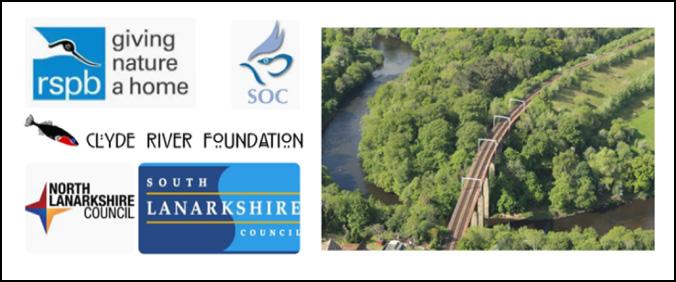
Maintain effective communication, consultation and engagement with stakeholders.
Developing and monitoring performance against defined environmental and sustainability objectives.






We want to protect our environment and minimise any detrimental impact. We do this by understanding the environment in which we are working and adopting the Source-Pathway-Receptor Model to effectively manage risks. Our Aspects and Impacts Registers identify and assess all potential environmental impacts as a result of the activities being undertaken. We determine the proportionate level of control measures through using a risk-based (likelihood vs impact) matrix.

Environmental events are unplanned events. A target is in place for each project to have an Environmental Incident Response Plan to ensure immediate and correct response to minimise the impact of an event. Environmental incidents are assessed and reported as per standard operating procedures. We have key targets on reducing both the frequency and severity of environmental incidents.
Objective: Minimise environmental impact
Target: No category 1 Environmental Incidents
Objective: Reduce pollution frequency
Target: Environmental Incident Reportable Frequency Rate >0.05
• Source – Pathway – Receptor Model
Objective: Pollution Prevention
Target: Environmental Incident Response Plan in place on each project
• Construction Industry Research and Information Association (CIRIA) Environmental good practice on site
• ISO 14001
IMS Tactics
• POL 05/02 Environmental Aspects and Impacts Register
• STY/PRO/09 Procedure for Environmental Aspects and Impacts
• STY/ENV/PRO/02 Environment and Social Management Plan Completion
• STY/ENV/PRO/02/F01 Environment and Social Management Plan
• STY/ENV/PRO/02/GN01 Environment and Social Management Plan Completion
• STY/ENV/PRO05/GN02 Sustainable Construction Review
• STY/ENV/PRO/05/F02 Sustainable Construction Review
• STY/ENV/PRO/08 Pollution Prevention and Spills Management
• STY/HSQ/PRO01 Reporting and Investigation of Accidents and Incidents
• STY/ENV/PRO/02/F06 Environmental Incident Response Plan (EIRP)
• STY/ENV/PRO08/GN01 Pollution Prevention Measures
• STY/ENV/PRO08/GN02 Environmental Incidents and Reporting
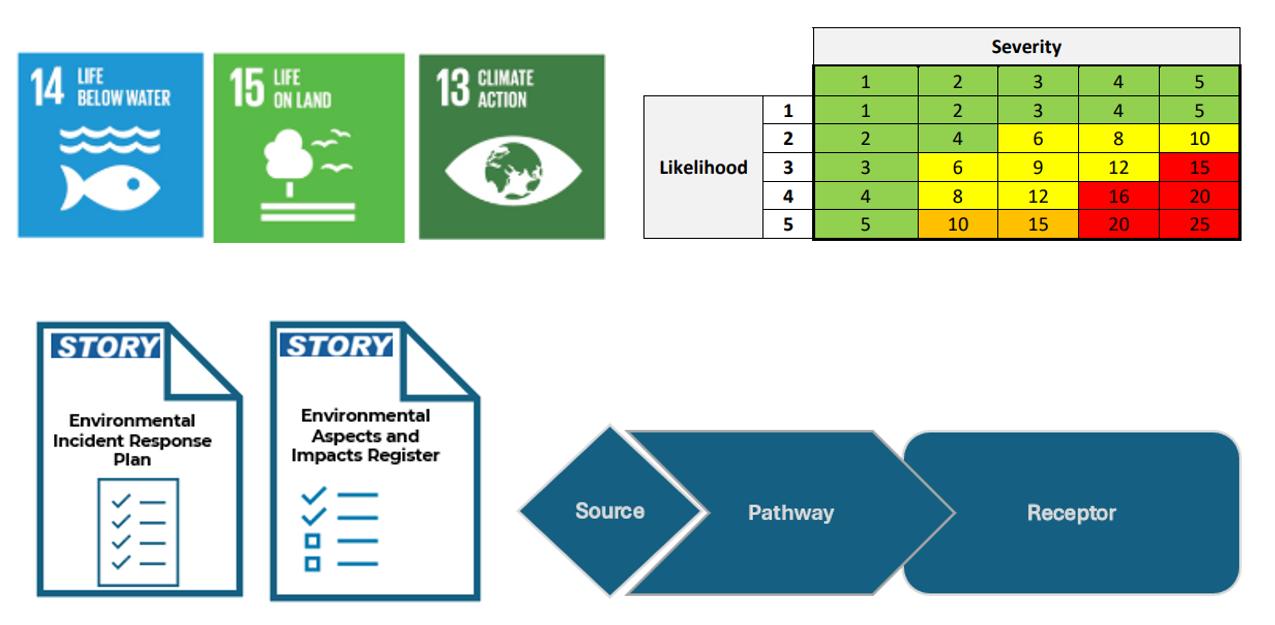
Contaminated groundwater required pumping to enable the continuation of site works and excavation whilst avoiding the spread of contamination across the site.
An innovative product, Green Rhino Ultra Fine Sediment and Oil Filter, was trailed which filtered the water allowing for on-site disposal which would otherwise have to be removed as contaminated waste. This saved on waste disposal cost, logistics and transportation with an associated saving of 465 kg CO2e.
As the process was new, the trail involved a rigorous monitoring plan to ensure correct performance.
A settlement system was designed to minimise the sediment passing through the filter, which extending the operational performance and lifespan of the filter, thus reducing waste and additional cost for replacement.
The findings from the monitoring programme provide a robust dataset enabling the recommendation for wider application across out sites.
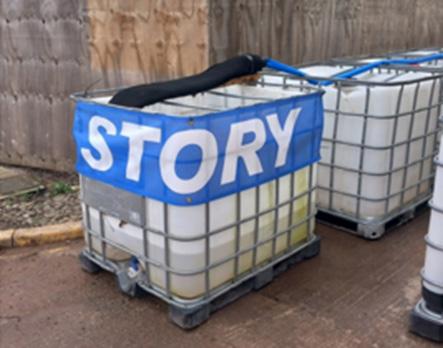
Maintain effective communication, consultation and engagement with stakeholders.
Developing and monitoring performance against defined environmental and sustainability objectives.






We are working to incorporate sustainability within our procurement procedures. This includes a target ensuring that procurement practices align with ISO 20400 Sustainable Procurement, and that the supply chain aligns with BES 6001 and promotes the use environmental product declarations (EPDs).
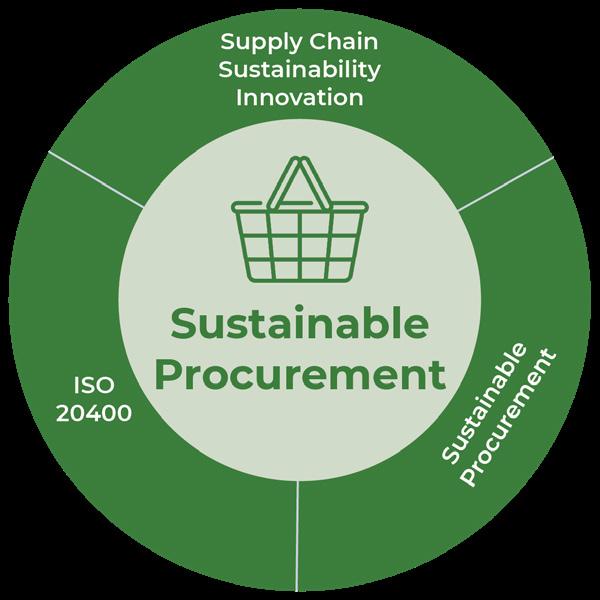
Working with our supply chain, we have a target to promote sustainable procurement and innovation. There are several cobenefits including reducing our Scope 3 emissions, minimising the impact on environment, reducing waste, and promoting circular economy.
Through collaboration we can work collectively on key challenges around efficient use of resources and raw materials across our supply chain to create a diverse and resilient supply chain built on a strong sustainability culture.
Objective: Sustainable Procurement
Target: Have a Sustainable Procurement Statement in place
Objective: ISO 20400 Target: Adopt the principles of ISO 20400 across the business, including ISO 44001
• ISO 20400 Sustainable Procurement
Objective: Supply Chain
Sustainability Innovation
Target: Hold Supply Chain Sustainability Innovation
Event
• BES 6001 Framework Standard for Responsible Sourcing
• ISO 44001
• ISO 14001
• POL 05/02 Environmental Aspects and Impacts Register
• STY/PRO/09 Procedure for Environmental Aspects and Impacts
• STY/ENV/PRO/02 Environment and Social Management Plan Completion
• STY/ENV/PRO/02/F01 Environment and Social Management Plan
• STY/ENV/PRO/02/GN01 Environment and Social Management Plan Completion
• STY/ENV/PRO05/GN02 Sustainable Construction Review
• STY/ENV/PRO/05/F02 Sustainable Construction Review
• STY/PROC/PRO/01 Procurement Process
• STY/PROC/PRO/08 Management of Supply Chain
• STY/PROC/PRO/004 Procurement of Plant and Equipment
• STY/PROC/PRO/033 Procurement of Materials
• STY/PROC/PRO/002/GN1 Project Procurement Strategy
• STY/PROC/PRO/002/GN4 Completing a Sub-contract Enquiry
• STY/PROC/PRO/003/GN8 Responsible Procurement
• STY/PROC/PRO/003/GN4 Material Specifications
• STY/PROC/F03 PQQ Section B – HSQE
• STY/PROC/F07 Subcontractor Quotation Enquiry - All Divisions
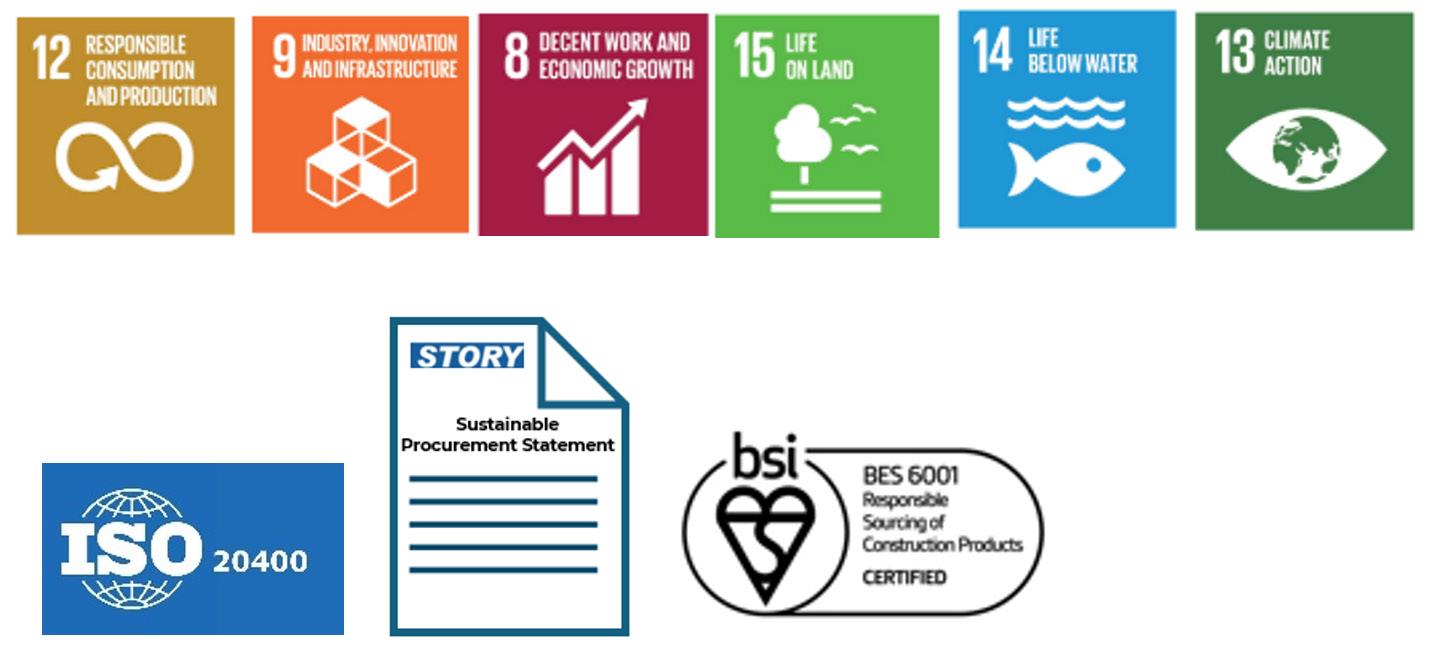
By using the Sustainable Construction Review (SCR) following option selection, the design was changed from precast concrete units in favour of a loose-laid membrane solution.
This change supported the principles of Minimum Viable Product (MVP) by simplifying the design, minimising material use, and reducing reliance on heavy plant and machinery. Additional environmental beneficial outcomes were also achieved:
• Noise reduction: achieve through minimised machinery movements.
• Minimise nuisance: reducing disruption to nearby residents, station users and sensitive receptors through less use of machinery.
• Lower embodied carbon: changing from precast concrete to the loose laid membrane significantly decreased the embodied carbon associated with the project.
• Reduced logistics emissions: avoiding the need for delivery and installation of precast concrete units, along with reduced plant usage, contributed to a lower overall carbon footprint. The project achieved a cost saving of £600,000 and a saving of 41.45 tonnes of CO₂e.
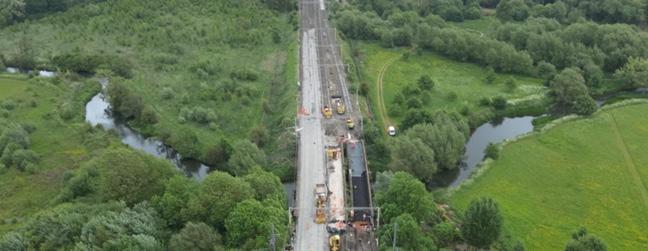






Our approach to waste management follows the Waste Management Hierarchy (WMH) prioritising avoidance of waste generation. Designing out waste is a key founding principle of the circular economy. We foster the principles of circular economy BS 8001:2017: Framework for implementing the principles of the circular economy in organisations – guide’.
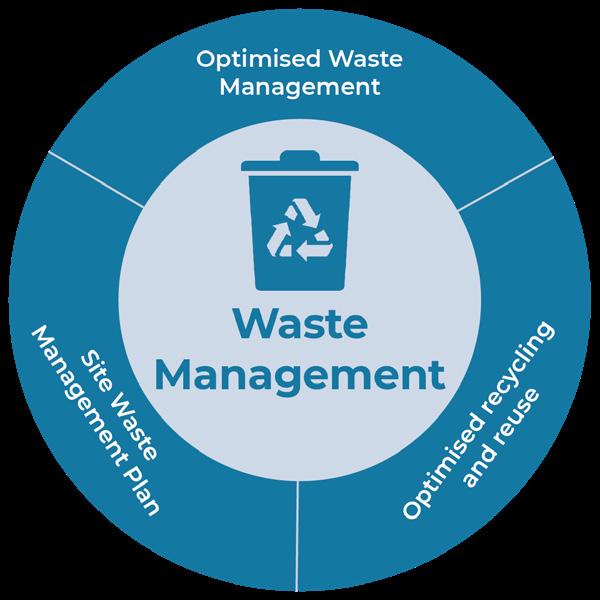
A key target is for each project to have a Site Waste Management Plan (SWMP) in place to ensure the effective management of waste, including the storage of waste to prevent pollution. The SWMP identifies all wastes and its classification to ensure optimal waste routing. We have targets in place around reuse/recycling and landfill diversion. We record our waste transfers working closely with waste brokers to ensure duty of care, with waste data recorded on waste broker portals.
Objective: Site Waste Management Plan (SWMP) Target: In place on each project
Objective: Optimise recycling and reuse Target: 95% reuse/recycling rate
Objective: Optimised waste management Target: 99% landfill diversion rate
• Waste Management Hierarchy
• BS 8001
• ISO 14001
• Contaminated Land: Applications in Real Environments (CL:AIRE) IMS Tactics
• POL 05/02 Environmental Aspects and Impacts Register
• STY/PRO/09 Procedure for Environmental Aspects and Impacts
• STY/ENV/PRO/02 Environment and Social Management Plan Completion
• STY/ENV/PRO/02/F01 Environment and Social Management Plan
• STY/ENV/PRO/02/GN01 Environment and Social Management Plan Completion
• STY/ENV/PRO05/GN02 Sustainable Construction Review
• STY/ENV/PRO/05/F02 Sustainable Construction Review
• STY/ENV/PRO/02/F05 Site Waste Management Plan (SWMP)
• STY/ENV/PRO/05/F01 Waste Contamination Check Sheet
• PRO/30 Waste Disposal
• PI/09/02 Waste Disposal
• STY/ENV/PRO05/GN01 Transfer of Non-Hazardous Stone and Aggregates on and Between Sites (England & Wales)
• FORM/827 Site Waste Requisition
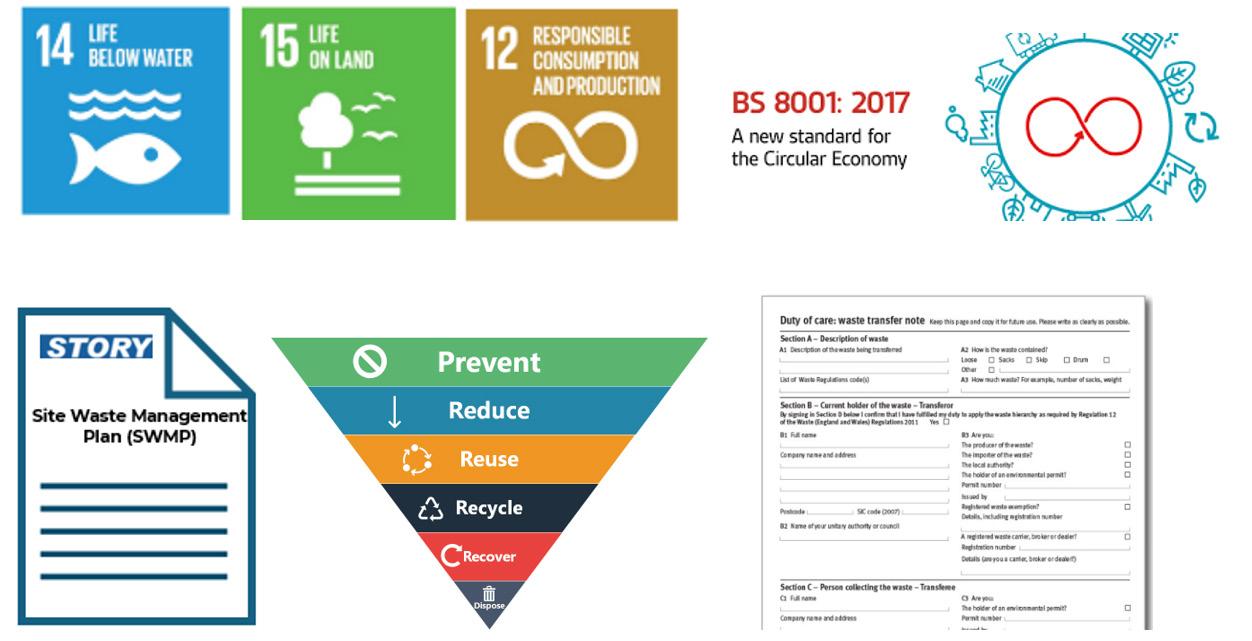
Waste segregation and compliance on the Midland Main Line set an example for waste management on site and increased circular economy.
• All sites had the appropriate hazardous waste drums on site for aerosols, oily rags and paint tins as these were identified as waste types to be generated.
• Separate skips for wood, metal and general waste were available on every site.
• All skips and drums were clearly labelled to allow for correct sorting and segregation.
• An inspection schedule was implemented to ensure compliance with waste management procedures and minimise the risk of pollution.
• Each individual waste stream was identified within the Site Waste Management Plan (SWMP).






Vision
‘Do it Right’ means ‘Do it Sustainably’ Mission
Maintain an up-to-date Environmental Legislation Compliance Matrix
Objective 1: Project Carbon assessment
Target 1.1: In place on each project >£1m.
Objective 2: SBTi
Target 2.1: Verified SBTi targets in place.
Objective 3: PAS 2080
Target 3.1: PAS 2080 certification in place by Q4 2025.
Objective 4: Biodiversity Assessment
Target 4.1: In place on each project
Objective 5: No Net Loss.
Target 5.1: Achieve No Net Loss on each project as a minimum.
Objective 6: Minimise environmental impact.
Target 6.1: No Category 1 Environmental Incidents.
Objective 7: Reduce pollution frequency.
Target 7.1: Environmental Incident Frequency Rate >0.05.
Objective 8: Pollution Prevention.
Target 8.1: Environmental Incident Response Plan in place on each project.
Objective 9: Sustainable Procurement
Target 9.1: Have a Sustainable Procurement Statement in place.
Objective 10: ISO 20400.
Target 10.1: Adopt the principles of ISO 20400 across the business, including ISO 44001.
Objective 11: Innovation in Sustainable Procurement.
Target 11.1: Hold Supply Chain Sustainability Innovation Event.
Objective 12: Site Waste Management Plan (SWMP)
Target 12.1: In place on each project.
Objective 13: Optimise recycling and reuse.
Target 13.1: 95% reuse/recycling rate.
Objective 14: Optimised waste management.
Target 14.1: 97% landfill diversion rate.
• Greenhouse Gas Reporting Protocol
• PAS 2080
• SBTi
• ISO 14001
• Biodiversity Mitigation Hierarchy
• Statutory Biodiversity Metric
• Habitat Condition Assessment Template
• ISO 14001
• Source, Pathway, Receptor Model.
• CIRIA Environmental good practice on site.
• ISO 14001
• ISO 20400
• BES 6001
• ISO 14001
• ISO 44001
• Waste Management Hierarchy
• BS 8001
• ISO 14001
